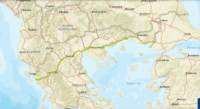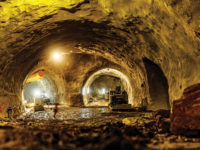
Despite its huge debts, Greece is in recovery mode. Forecasters expect the stricken European state to start climbing out of its deep recession, and renewed construction of four large, internationally backed highway projects is seen as a sign of new life.
The four stalled projects, which have a combined value exceeding $10 billion, were "visible casualties of the crisis in Greece," according to Johannes Hahn, the European Union's commissioner for regional policy. The crisis slashed toll revenues, which were meant to help finance the work, and impaired lenders' access to funds.
After intense negotiations among the government, the contractors and large banking syndicates, the 30-year build-operate-transfer projects are now back on track and helping to reduce the crippling national unemployment rate of over 25%.
Just two of the projects, together valued at $4.3 billion, will secure some 10,000 direct and indirect jobs at peak, according to the French contractor Vinci Group, Paris, which has invested in both.
Twists and Turns
The four projects were to be funded by a mix of contractor equity, bank loans, international financial institution debt, and grants from the government and the European Union. Each project included sections of existing highways whose toll revenues were to complete the financing.
However, the projects were launched—starting as far back as 2006—on the eve of the global banking crisis. With toll revenues dwindling—in one case, by 50%—the banks turned off the flow of cash and work gradually ground to a halt.
The experience of one consortium, Olympia Odos, tells the story. The contract, signed in 2008, covered financing, implementing and operating new and improved sections of the 365-kilometer Athens-Corinth-Patras-Tsakona route to the Peloponnese. It included 163 km of new construction and 120 km of upgrades, while just over 80 km needed no work.
Olympia Odos, which is 30% owned by Vinci, originally was to finance the deal, with $1.6 billion of commercial loans, $280 million of shareholder equity, $847 million in government grants and loans from international financial institutions, including the EU's European Investment Bank. Other project shareholders included Germany's Hochtief A.G., with 17%, and local contractors.





Post a comment to this article
Report Abusive Comment